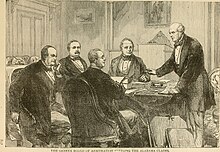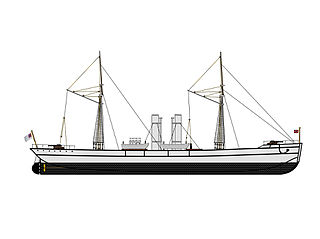
The CSS Tallahassee was a twin-screw steamer and cruiser in the Confederate States Navy, purchased in 1864, and used for commerce raiding off the Atlantic coast. She later operated under the names CSS Olustee and CSS Chameleon.

Joseph Henderson was a 19th-century American harbor pilot who guided large vessels into and out of New York Harbor as a Sandy Hook pilot. During his long career his work included bringing the ship that carried the Statue of Liberty safely into port after its trip from Europe.

George W. Blunt, completed in 1856, was a schooner built in New York that operated as a New York Sandy Hook pilot boat designated Pilot Boat No. 11. The schooner was used to pilot vessels to and from the Port of New York and New Jersey. That schooner was sold to the United States Navy in 1861, renamed and commissioned as the USS G. W. Blunt (1856), serving in the South Atlantic Blockading Squadron in the South. A second schooner, also named George W. Blunt, was built in East Boston in 1861 and purchased to replace the first schooner as a pilot boat.
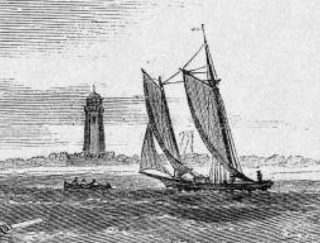
The Ellwood Walter, No. 7 was a 19th-century Sandy Hook pilot boat built in 1853 by Edward F. Williams at Greenpoint, Brooklyn to replace the pilot boat Yankee, which was lost in December 1852. The schooner was used to pilot vessels to and from the Port of New York. She was replaced by the Edmund Driggs, No. 7, in 1864.

The Isaac Webb was a 19th-century Sandy Hook pilot boat built in 1860 by Webb & Bell for the New York and Sandy Hook pilots. She received a reward by the Board of Pilot Commissioners of New York for saving three sailors from the wreck of the bark Sarah, that was caught up in a hurricane. The Webb was shipwrecked in a dense fog at Quonochontaug Beach, Long Island in 1879. She was replaced by pilot boat Columbia.

The Moses H. Grinnell was a 19th-century pilot boat built in 1850 for the New York maritime pilots. She was designed by the yacht designer George Steers. The Grinnell was the first pilot boat to feature a fully developed concave clipper-bow, which was to become the New York schooner-rigged pilot boat's trade mark. This new design was the basis for the celebrated yacht America.
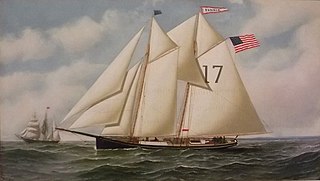
The Fannie was a 19th-century Sandy Hook pilot boat built in 1860 by Edward F. Williams at his shipyard in Greenpoint, Brooklyn for New York City pilots. She was in the pilot service during the American Civil War. In an age of steam, she was sold in 1896.

James Funk was a 19th-century New York City pilot boat built in 1862 at Greenpoint, Brooklyn for a company of New York Pilots. She was built for speed. She was assigned the "Number 22," which was displayed on her mainsail. The James Funk was captured and burned by the Confederate raiding steamer CSS Tallahassee during the American Civil War. The Charlotte Webb was built in 1865 to take the place of the James Funk that was destroyed.

The Caldwell H. Colt was a 19th-century Sandy Hook pilot boat, built in 1887, at the Samuel H. Pine's shipyard in Greenpoint, Brooklyn, for a group of New York Pilots. She was one of the pilot-boats that was in the Great Blizzard of 1888, that was one of the most severe blizzards in American history. In 1903, she was sold to a group of Pensacola, Florida pilots.
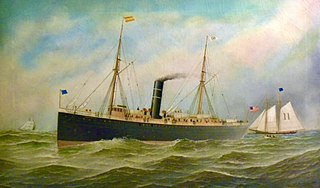
The Ezra Nye was a 19th-century pilot boat, built in 1859 by the Wells & Webb shipyard in Greenpoint, Brooklyn for a group of New Jersey and Sandy Hook Pilots. She was one of the pilot-boats that was in the Great Blizzard of 1888, that was one of the most severe blizzards in American history. In 1896, in the age of steam, the Ezra Nye along with other pilot boats, were replaced with steamboats.
The James Avery was a 19th century Sandy Hook pilot boat built in 1837 for a group of New York Pilots. She was built by the shipbuilder Jacob Bell. The James Avery was a pilot boat during the American Civil War that helped in the search of the Confederate CSS Tallahassee. She was last seen in 1872, off the Highlands.
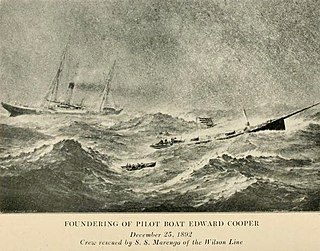
The Edward Cooper was a 19th-century Sandy Hook pilot boat, built in 1879 for New York Pilots at Greenpoint, Brooklyn. She was named in honor of the Mayor of New York City. The Edward Cooper helped transport New York City maritime pilots between inbound or outbound ships coming into the New York Harbor. She survived the Great Blizzard of 1888. In 1892, the Cooper sank in a snowstorm and was replaced by the Joseph Pulitzer in 1894.

The Mary E. Fish was a 19th-century Sandy Hook pilot boat, built at the Edward F. Williams shipyard of Greenpoint, Brooklyn in 1861 for Richard Brown and the New York Pilots. She was built to replace the Mary Taylor. The Fish was hit and sank by the schooner Frank Harrington in 1885 and replaced by the David Carll.

Charlotte Webb was a 19th-century New York City pilot boat built in 1865 at the Webb & Bell shipyard to take the place of the James Funk, that was destroyed by the rebel Tallahassee during the Civil War. She survived the Great Blizzard of 1888, but was run down by the French steamship La Normandie in 1889. She was replaced by the pilot boat George H. Warren.
The A. T. Stewart was a 19th-century Sandy Hook pilot boat built in 1865 at the Edward F. Williams shipyard to replace the pilot boat George Steers, which was lost in 1865. She was built for the New Jersey and New York Sandy Hook Pilots Association. The Stewart was in a collision with the steamship Scotia and sank in 1869. She was replaced by the James Gordon Bennett in 1870.
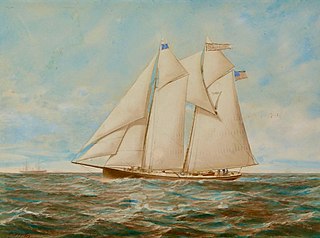
The Edmund Driggs was a 19th-century Sandy Hook pilot boat built in 1864 at the Edward F. Williams shipyard in Greenpoint, Brooklyn. She was built to replace the pilot boat Elwood Walter. The schooner was used to pilot vessels to and from the Port of New York. She survived the Great Blizzard of 1888. In the age of steam, she was sold in 1896.
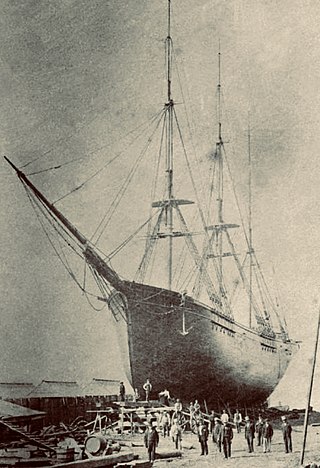
Edward Francis Williams, was a 19th-century shipbuilder. He apprenticed under his father Jabez Williams. Edward F. Williams built his own shipyard, building clipper ships and eleven Sandy Hook pilot boats, some of the finest boats in the fleet. He was the first president of the Greenpoint Savings Bank. Williams died in New Providence, New Jersey, in 1902.

Favorite or Favorita, was a 19th-century New York Sandy Hook pilot boat built in the early 1820s. She helped transport New York City maritime pilots between inbound or outbound ships coming into the New York Harbor. Favorite collided with a United States steamer and sank in 1865 near Barnegat Lighthouse.

The Adriatic was a three-masted, two deck, packet ship built in 1861 by Curtis & Tilden, Boston, Massachusetts, United States. On August 12, 1864, the Adriatic was embarked from London, England en route to New York City carrying 163 German immigrants and 100 US citizens. She made it as far as the New Jersey coast before meeting the Confederate raider CSS Tallahassee, that collided with her. Captain John Taylor Wood of Tallahassee ordered every passenger on the Adriatic to be taken prisoner and put on the Tallahassee. Wood then ordered the Adriatic to be burned.
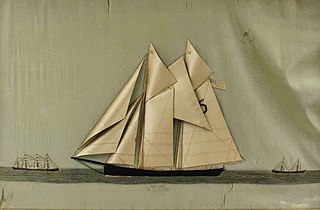
W. W. Story was a 19th-century New Jersey pilot boat built in 1874 at the Samuel H. Pine shipyard in Greenpoint, New York. She sank off Sandy Hook horseshoe during the Blizzard of 1888. She was raised and turned into a fishing smack. On November 13, 1896, she was reported missing along with her crew after being last seen along Absecon, New Jersey when she was caught up in a hurricane.


